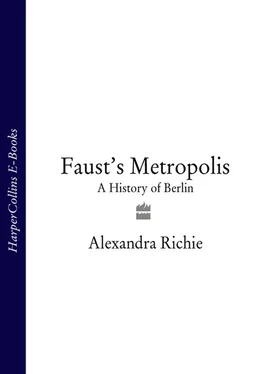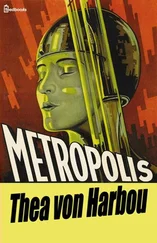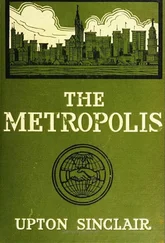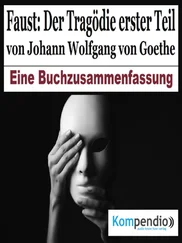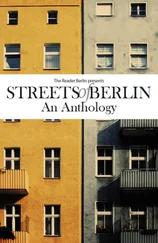Many have tried to capture this strange, incomplete city, this unfinished metropolis. It has been filmed and written about in hundreds of works, the subject of a thousand paintings. Ernst Toller and Sergei Diaghilev and Arnold Schoenberg loved it; Goethe and Lessing and Heinrich Heine were infuriated by it; Theodor Fontane and Alfred Döblin saw through it. Paunchy, cocky Berliners were the main subjects of Heinrich Zille’s witty sketches; weary, grey-faced workers inhabit Baluschek’s moving portrayals of the slums; self-confident Wilhelmine ladies dazzle us from Menzel’s warm portraits of the Kaiser’s court; its hardness is captured in the faces of prostitutes leering from the works of Georg Grosz and Otto Dix, and its very history is encapsulated in Meidner’s apocalyptic visions which exploded across his canvases and foretold the end of innocence in the twentieth century. Berlin (disguised as London) is the star of Brecht and Weill’s Threepenny Opera and of Isherwood’s Goodbye to Berlin and the film Cabaret ; it is captured in the Berlin Diaries of Marie Vassiltchikov and William Shirer and in films like Wim Wenders’s Der Himmel über Berlin or Walter Ruttmann’s Sinfonie der Grossstadt or Michail Tchiaureli’s 1949 The Fall of Berlin with its score by Dmitri Shostakovich. Now a new group of hopefuls have taken up where Döblin left off and Berlin has become the main character of novels from Botho Strauss’s Die Feheier des Kopisten and Matthias Zschokke’s Der dicke Dichter to Bodo Morshäuser’s Gezielte Blicke and Jakob Arjouni’s Magic Hoffmann.
All these works offer tantalizing glimpses of Berlin but none can truly capture the essence of a place whose identity is based not on stability but on change. Berlin can appear solid and secure at one moment, but its history has shown the dangers of taking the image for granted. It is a volatile place, and many have found to their cost that the veneer of normality can vanish as quickly as yellow Mark Brandenburg sand slips through the fingers. Berliners themselves have rarely appreciated their own unique qualities and have spent much of their history striving to emulate – or dominate – Paris or London or Moscow, or boasting that they have more bridges than Venice, or that they are the Athens or the Chicago on the Spree. Berlin is a city which has never been at ease with itself.
It is in its portrayal of constant striving without counting the cost that the legend of Faust can serve as a metaphor for the history of Berlin. With Mephistopheles at his side Faust embarks on a terrible journey of discovery, meeting vile witches and the griffins and sphinxes of antiquity, being thrilled by the science and art and politics of the world, and murdering and burning those who stand in his way. Berlin, too, has undertaken an extraordinary journey, and its persistent quest for change has left it either – as now – cautiously searching for a role, or indulging in overweening arrogance and aggression. Its chameleon tendency to follow each new great ideology or leader, or to lurch maniacally from one grand political vision to another, has left a mesmerizing but often tragic legacy.
‘So it is, when long-held hopes aspire’, Goethe’s Faust cries, ‘fulfilment’s door stands open wide when suddenly, from eternal depths inside, an overpowering flame roars to confound us.’ Berlin is no stranger to this fire. No other city on earth has had such a turbulent history; no other capital has repeatedly become so powerful and then fallen so low. Its early years were marked by waves of immigration and population shifts – Burgundians, Wends, missionary Christians all left their mark on the little trading town in the Mark Brandenburg. Its rise began in earnest with the coming of the Hohenzollern dynasty which, after the gruesome deprivations of the Thirty Years War, led Prussia’s relentless drive for great power status through the creation of a stable economy and, more to the point, a formidable army – the ‘army with a state’. But the path was not a smooth one and Berlin seesawed between triumphalism and defeat, one moment revelling in the spoils of Frederick the Great’s victory in the Seven Years War, the next licking its wounds as the humiliated vassal occupied by Napoleon. Berlin’s drive for prestige was fulfilled when it became the capital of Bismarck’s united Germany in 1871, when the parvenu , ‘upstart’ city took on the world and became a dynamic industrial powerhouse. But this too was shattered in the slaughter of the First World War, a bloodbath largely provoked by Berlin’s leaders which led to the deaths in the trenches of 350,000 of its young men. The city emerged from war a mere shadow of its former self, racked by civil strife and targeted both by Lenin as the key to the world revolution, and by Hitler as the key to the German one. The extraordinary burst of creativity for which the Weimar Republic is remembered was not enough to prevent both left and right from turning its streets into a bloody battleground. Hitler’s victory led to another convulsion, and all that Weimar had stood for was swept aside. Many of Berlin’s greatest artists, writers, directors, architects and actors – men and women who touched every aspect of twentieth-century culture – fled or were murdered after 1933. Nevertheless, most Berliners dedicated themselves energetically to the Nazi cause with only a few brave individuals risking their lives to resist the downward spiral into criminality and mass murder. The shadow cast by Hitler’s ‘Germania’ was dark indeed – it was Berlin, after all, which prompted Elias Canetti to write in 1943 that he could no longer look at a map as ‘the names of cities reek of burnt flesh’. 4Throughout its history Berlin has seemed to contain, in Nietzsche’s words, something that ‘is hostile to life and destructive … a hidden will to death’. 5As early as 1907 the Berlin critic Maximilian Harden wrote in Die Krisis that Berlin held the seeds of its own destruction; it was already famous for its tendency ‘to suffer more than other cities in an endless parade of grisly disappointments’. 6
The city has a violent past, but the ‘misery thesis’ of the post-war period which taught that Luther begot Frederick begot Bismarck begot Hitler, or that the Prussian capital was the ultimate source of all that was evil in German history, was simplistic at best and overshadowed its great cultural, political and economic contributions to Europe’s heritage. The poetry and music written to celebrate the end of the Thirty Years War, the tolerance enshrined in the Edict of Potsdam which granted asylum to the persecuted Huguenots of France, the Enlightenment of Nicolai and Mendelssohn and the salons of Rahel Levin and Henriette Hertz also have their place in Berlin’s history. The city was a focus for the arts: Carl Maria von Weber’s Der Freischütz was premièred in Berlin, as was Alban Berg’s Wozzeck ; indeed the first ever performance of fragments of Part I of Goethe’s Faust took place there in 1819. 7Nineteenth-century Berlin might have been the most militaristic city in Europe, but its university and its myriad institutes and museums and societies also made it one of the greatest centres of intellectual life; if Berlin was the city of von Roon and von Moltke it also belonged to Hegel and Virchow, Schinkel and Fontane. And it was then that a tough new breed of businessmen – Rathenau, Borsig, Bleichröder, Ullstein and Siemens – began to invent and invest and industrialize, transforming nineteenth-century Berlin from a struggling manufacturing centre into the mightiest industrial city in Europe. Industry attracted immigrants, and ‘Red Berlin’ grew exponentially, from 170,000 in 1800 to 4 million in just over a century, becoming the focal point of the new working-class movement soon to sweep the world. Lenin, Marx, Luxemburg and Liebknecht, Bebel and Radek all spent time there, plotting the Communist revolution to be carried out by disgruntled workers rising up in the factories and slums. At the same time Berlin became an unlikely centre for those modernists who dared to defy the Kaiser’s bizarre pronouncements on art; the new Freie deutsche Bühne staged plays by Ibsen and Hauptmann while the Berlin Secession displayed the works of Max Liebermann and Käthe Kollwitz and Edvard Munch. And then, in the 1920s, Berlin became a magnet for the most innovative spirits of the age, home to architects and members of the Bauhaus such as Mies van der Rohe, Walter Gropius, Moholy-Nagy and Wassily Kandinsky, artists from Otto Dix and Georg Grosz to Christian Schad, directors like Fritz Lang and Josef von Sternberg and Billy Wilder, actors such as Josephine Baker, Marlene Dietrich and Greta Garbo; musicians including Wilhelm Furtwängler, Otto Klemperer and Arnold Schoenberg; and writers like Heinrich Mann, Gerhart Hauptmann and Stefan Zweig, Carl Zuckmayer and Alfred Döblin. For a brief shimmering moment these men and women made Berlin the undisputed capital of twentieth-century culture. The Nazis destroyed all that and the city has never recovered; nor did it recover from the demise of its once thriving Jewish community. Most of Berlin’s 170,000 Jews – a third of all Jews in Germany – were forced to flee, or were murdered.
Читать дальше
